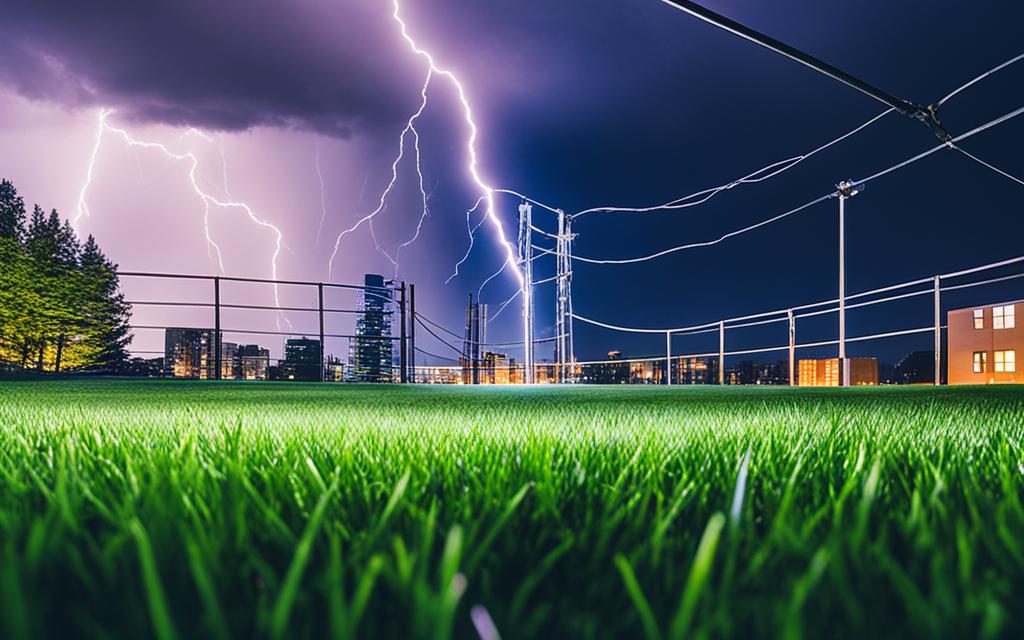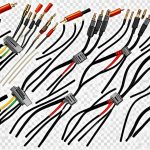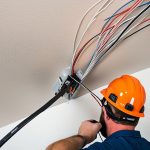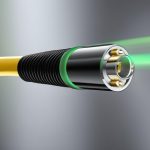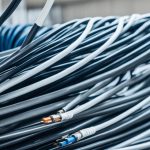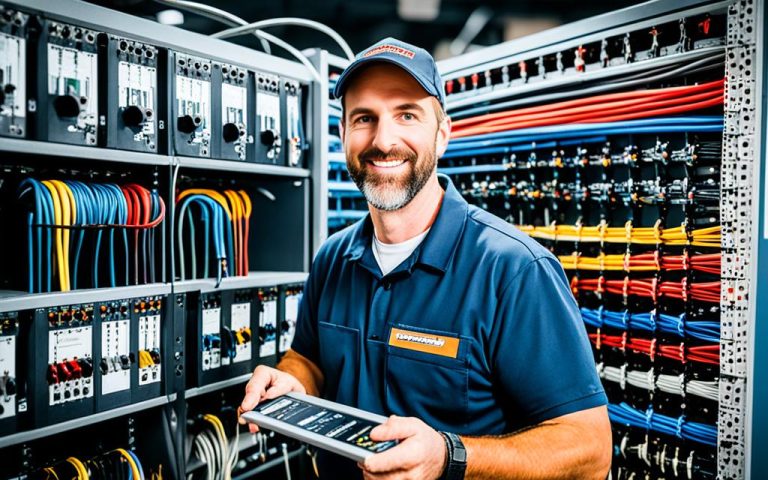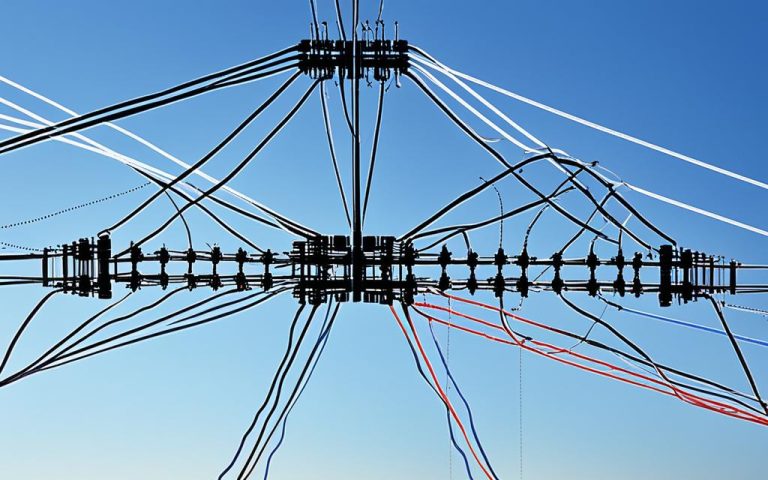Grounding is an essential practice in ensuring the safety and uninterrupted performance of coaxial networks in communication systems. Proper grounding protects against lightning strikes and voltage potentials, ensuring the longevity and reliability of the network.
In this article, we will explore the best practices for grounding coaxial networks based on factual data from various sources. Whether it’s in tower-based networks or residential setups, understanding the importance of grounding is vital for maintaining safe and reliable communication systems.
Importance of Grounding in Coaxial Networks
Grounding plays a crucial role in protecting coaxial networks from lightning strikes and voltage surges. Without proper grounding, the network can be damaged or even destroyed, posing a significant threat to communication systems. The importance of grounding in coaxial networks cannot be overstated as it ensures the safety and reliability of the network and the connected devices.
The Risks of Lightning Strikes
Lightning strikes pose a significant risk to coaxial networks, especially in areas prone to thunderstorms and adverse weather conditions. When a lightning bolt strikes near the network, it creates a surge of electrical energy that can travel through the coaxial cables, causing damage to the network infrastructure and connected equipment. Proper grounding ensures that this electrical energy is safely directed to the ground, preventing any potential harm to the network.
Coaxial networks, especially those installed in outdoor environments or on high structures like towers, are vulnerable to lightning strikes due to their exposure to the elements. By implementing effective grounding measures, the network’s susceptibility to lightning-induced damage is greatly reduced, ensuring uninterrupted communication and minimizing the risk of downtime.
Safeguarding Against Voltage Surges
In addition to protecting against lightning strikes, grounding also provides crucial protection against voltage surges. Voltage surges can occur due to power irregularities or malfunctions within the electrical system. These surges can propagate through the coaxial network, causing damage to sensitive equipment such as modems, routers, and connected devices.
Proper grounding redirects any excess voltage to the ground, preventing it from reaching the network infrastructure and connected devices. By establishing a low-resistance path to ground, grounding safeguards the network and the connected equipment from the harmful effects of voltage surges.
“Proper grounding is essential in maintaining the integrity and performance of coaxial networks. It protects against lightning strikes and voltage surges, ensuring a safe and reliable communication system.”
Overall, the importance of grounding in coaxial networks cannot be overlooked. It provides vital protection against lightning strikes and voltage surges, which are significant threats to the integrity and longevity of the network. By implementing proper grounding measures, network operators can ensure the safety and reliability of their communication systems, minimizing the risk of costly repairs and downtime.
Grounding Measures for Tower-based Networks
Tower-based networks, such as those used by TV stations and cell phone carriers, require specific grounding measures to protect against lightning strikes and ensure the safe operation of the network. Implementing these grounding measures is essential to safeguard both the network and the connected devices.
Here are the recommended grounding measures for tower-based networks:
- Good ground system: Establish a robust ground system around the network site to dissipate electrical energy. This involves creating a low-resistance path to earth by driving ground rods deep into the ground and connecting them with grounding conductors.
- Grounding coax cables: Properly ground the coax cables at both the top and bottom of the tower. This ensures that any electrical energy induced by lightning strikes or surge events is safely redirected to the ground.
- Right-angle bends: Incorporate right-angle bends in the coax cables before entering the shelter or equipment room. These bends help to minimize the transfer of electrical energy into the shelter, reducing the risk of damage to the network components.
- Additional grounding inside the shelter: Implement additional grounding on the coax cables inside the shelter to create multiple paths for the electrical energy to follow in the event of a lightning strike or surge. This helps to protect the sensitive equipment housed within the shelter.
- Surge protectors: Install surge protectors on each coax cable to provide an added layer of defense against voltage surges. Surge protectors divert excess electrical energy to the ground, preventing it from reaching the network equipment.
By adhering to these grounding measures, tower-based networks can minimize the risk of lightning strikes, voltage surges, and other electrical disturbances, ensuring uninterrupted performance and enhanced safety.
Grounding Practices for Residential Coaxial Networks
In residential settings, proper grounding is essential for ensuring the safety and efficient performance of coaxial networks. By implementing recommended grounding practices, homeowners can protect their communication systems from potential hazards and ensure reliable connectivity.
One crucial aspect of grounding residential coaxial networks is bonding. It is recommended to bond the CATV system to a #6 AWG grounding wire. Additionally, existing utilities like water pipes or meter boxes can be utilized for bonding purposes, providing a reliable grounding connection.
Proper placement and attachment of coaxial cables are also important factors to consider. Homeowners should avoid potential trip points or areas where the cable could be damaged, which could disrupt the network’s performance. Furthermore, using proper torquing techniques for ground screws ensures secure connections and optimal grounding.
Compliance with the National Electrical Code (NEC) is crucial in residential grounding practices. The NEC provides guidelines and standards for safe and effective electrical installations, including grounding requirements. By adhering to these guidelines, homeowners can ensure that their residential coaxial networks are properly grounded, minimizing the risk of electrical incidents.
“Proper grounding practices in residential settings are vital for safeguarding communication systems and ensuring uninterrupted connectivity.”
Implementing these grounding practices for residential coaxial networks helps protect both the network itself and the connected devices. Grounding ensures that any electrical energy, such as voltage surges, is safely directed to the ground, preventing potential damage to the network and its components.
To further emphasize the importance of residential grounding practices, consider the following table:
| Grounding Practices | Benefits |
|---|---|
| Bonding to a #6 AWG grounding wire | Ensures a reliable grounding connection for the CATV system |
| Utilizing existing utilities (water pipes, meter boxes) for bonding | Provides an additional grounding pathway for enhanced safety |
| Proper placement and attachment of coaxial cables | Prevents cable damage and minimizes interference |
| Following NEC guidelines and compliance | Ensures adherence to safety standards and practices |
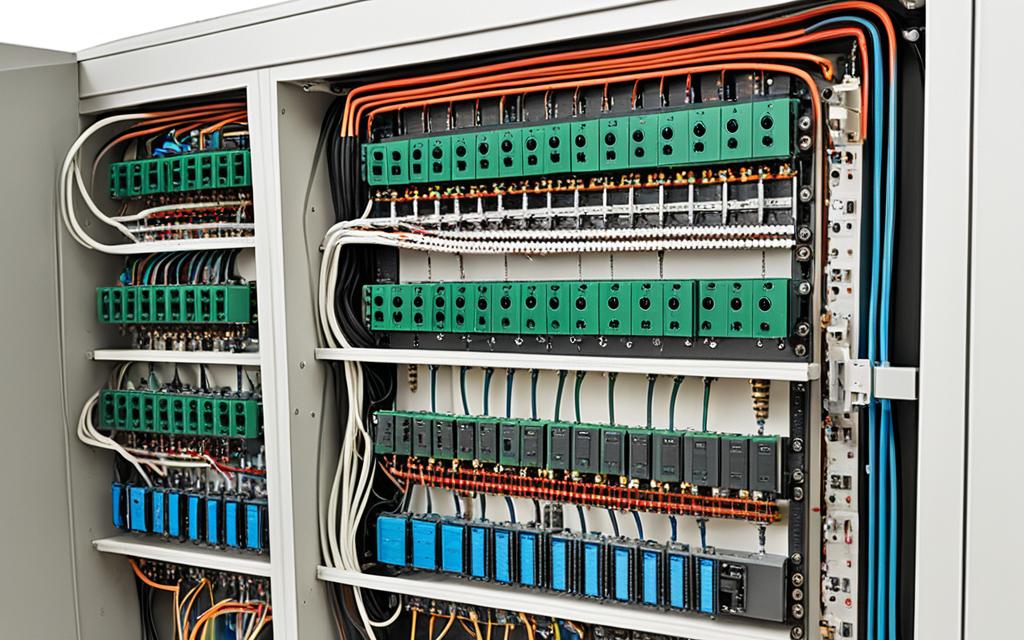
By following these grounding practices, homeowners can effectively protect their residential coaxial networks, secure uninterrupted communication, and safeguard their investment in connectivity.
Earth Grounding and Equipment Protection
In order to ensure the safety and protection of equipment in coaxial networks, it is crucial to implement proper earth grounding practices. Directly earthing equipment can lead to potential risks, so instead, it is recommended to connect equipment to surge protectors that are then connected to earth ground.
One important aspect of earth grounding is the protection of incoming wires, such as telephone lines, from creating destructive paths to earth near the equipment. By grounding these wires at a distance, the risk of damage to equipment and network integrity can be minimized.
When it comes to earthing wires, it is essential to use wires that are free from sharp bends and splices to ensure a low impedance to earth. This helps to maintain a strong and reliable grounding connection.

In addition to proper earthing, the use of low capacitance surge protectors is highly recommended for coaxial cables in order to minimize signal propagation interference. Gas Discharge Tubes (GDTs) are one example of low capacitance surge protectors that can help protect coaxial cables from voltage surges and maintain signal quality.
The Role of Bonding in Grounding Coaxial Networks
Bonding plays a vital role in the grounding of coaxial networks. It ensures electrical continuity by connecting multiple conductors to form a conductive path. This process helps to limit the voltage potential between the cable sheath and other grounded items in the house, such as water pipes and appliances. Proper bonding, utilizing #6 AWG grounding wire, and following good craft for locating and attaching wires are crucial to ensure that the path of least resistance is the ground wire.
Effective bonding provides several benefits, including:
- Enhanced safety by preventing voltage potential buildup
- Reduction of electromagnetic interference (EMI)
- Minimization of signal loss
- Protection against electrical faults
When bonding coaxial networks, it is essential to follow best practices:
- Utilize proper grounding wire: #6 AWG grounding wire is commonly used for bonding coaxial cables. This wire helps maintain a low-resistance path to ground, ensuring effective bonding.
- Locate bonding wires strategically: Bonding wires should be placed near the point of entry of the coaxial cables into the house. They should be parallel to the cable run and separated from power cables to avoid interference.
- Ensure secure attachment: Properly attach the bonding wire to the grounding electrode conductor, water pipes, or other acceptable grounding sources. Use secure and corrosion-resistant connectors for a reliable connection.
By implementing these bonding practices, the coaxial network can be effectively grounded, safeguarding against voltage surges, protecting equipment, and maintaining optimal signal quality.
Bonding Example:
“We had been experiencing frequent signal disruptions in our home theater system. After consulting with an expert, we realized that the lack of proper bonding was the culprit. By bonding the coaxial cables and connecting them securely to the grounding wire, we noticed a significant improvement in both signal quality and system performance. The bonding process was surprisingly straightforward, and we can now enjoy uninterrupted movie nights!” – Jane Doe, Home Theater Enthusiast
| Bonding Best Practices | Benefits |
|---|---|
| Utilize proper grounding wire (#6 AWG) | Ensures low-resistance path to ground |
| Locate bonding wires strategically | Reduces risk of electromagnetic interference (EMI) |
| Ensure secure attachment | Enhances safety by preventing voltage potential buildup |
Compliance with NEC and Industry Standards
Ensuring compliance with the National Electrical Code (NEC) is of utmost importance when it comes to the installation of wiring and equipment in both residential and commercial settings. The NEC provides comprehensive guidelines and regulations for proper grounding practices, with a strong emphasis on prioritizing the safety of individuals and protecting property from potential electrical hazards.
Additionally, industry standards established by organizations such as the National Fire Protection Association (NFPA) and the Institute of Electrical and Electronics Engineers (IEEE) play a vital role in shaping rules, best practices, and advancements within the cable industry. These standards serve as benchmarks and authoritative references, enabling professionals to implement effective grounding measures that align with industry requirements.
By adhering to the NEC guidelines and industry standards, businesses and homeowners can ensure that their coaxial networks are grounded in a compliant and safe manner, reducing the risk of electrical accidents and damage to property. Compliance not only promotes the integrity of the network but also demonstrates a commitment to upholding the highest safety standards within the industry.
Implementing NEC requirements and staying up-to-date with industry standards allows professionals to make informed decisions regarding grounding practices, ensuring the reliable and effective operation of coaxial networks.
Conclusion
Proper grounding practices are crucial for ensuring the safety and reliable performance of coaxial networks. By implementing the recommended grounding measures, both in tower-based networks and residential setups, the risk of lightning strikes and voltage surges can be significantly minimized. This not only protects the network infrastructure but also safeguards the connected devices and ensures uninterrupted communication.
Compliance with industry standards, such as the National Electrical Code (NEC), is vital in establishing reliable grounding practices and adhering to code regulations. Following these guidelines not only enhances the safety of the network but also helps in maintaining efficient communication systems.
In today’s fast-paced world, where communication plays a pivotal role in various sectors, prioritizing proper grounding in coaxial networks is of utmost importance. It ensures the longevity and uninterrupted performance of the network, providing peace of mind to both users and service providers. By implementing the recommended practices and staying updated with industry standards, individuals and organizations can create a solid foundation for their coaxial networks, ensuring safe and reliable communication.
FAQ
Why is grounding important in coaxial networks?
Grounding is essential in coaxial networks as it protects against lightning strikes and voltage surges, ensuring the safety and uninterrupted performance of the network and connected devices.
What are the grounding measures for tower-based networks?
Grounding measures for tower-based networks include having a good ground system around the site, grounding the coax cables at the top and bottom of the tower, using right-angle bends in the cables before entering the shelter, additional grounding on the coax cables inside the shelter, and utilizing surge protectors on each cable.
What are the recommended grounding practices for residential coaxial networks?
To properly ground residential coaxial networks, it is recommended to bond the CATV system to a #6 AWG grounding wire. Existing utilities like water pipes or meter boxes can be used for bonding. Other practices include proper placement and attachment of coaxial cables, avoiding potential trip points or areas where the cable can be damaged, and using proper torquing of ground screws.
How should equipment be connected to earth ground?
Equipment should not be directly earthed but should be connected to a surge protector, which is then connected to earth ground. Incoming wires, such as telephone lines, should be earth grounded, away from the equipment, to prevent destructive paths to earth. Low impedance earthing wires without sharp bends or splices should be used to ensure proper grounding. The use of low capacitance surge protectors, such as Gas Discharge Tubes (GDTs), for coaxial cables is recommended to minimize signal propagation interference.
What is the role of bonding in grounding coaxial networks?
Bonding is integral in grounding coaxial networks as it ensures electrical continuity and limits the voltage potential between the cable sheath and other grounded items in the house, such as water pipes and appliances. Proper bonding using a #6 AWG grounding wire and following good craft for locating and attaching wires ensures the path of least resistance is the ground wire.
Why is compliance with NEC and industry standards important for grounding coaxial networks?
Compliance with the National Electrical Code (NEC) and industry standards is crucial for ensuring proper grounding practices in both residential and commercial settings. The NEC provides guidelines for safe and practical grounding practices, while industry standards establish rules and developments for the cable industry, ensuring the reliability and safety of coaxial networks.

